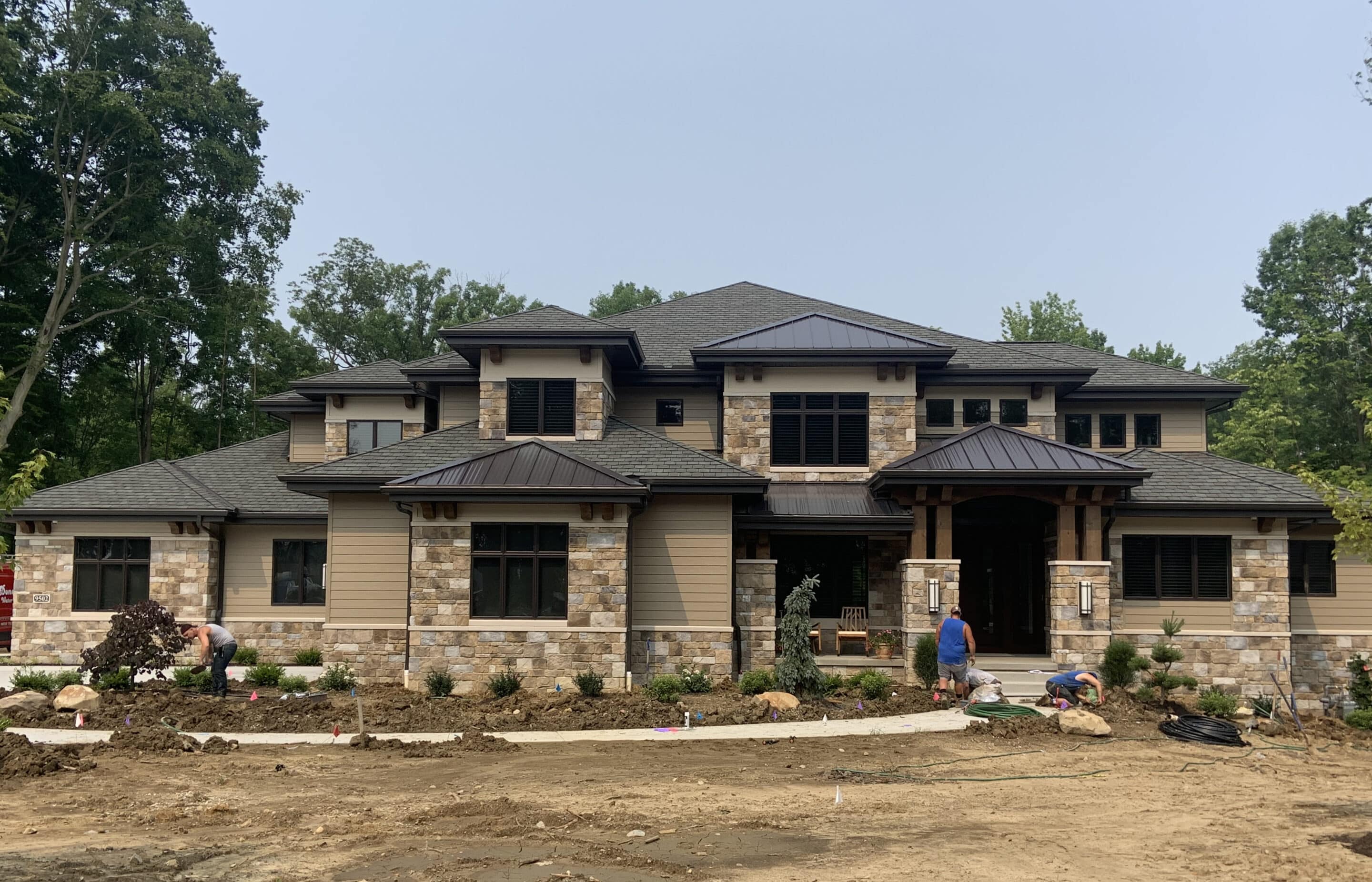How Weather Affects Faux Stone Veneer Installation

Wondering when is the best time to plan your stone veneer installation? There are a handful of factors that may impact your timeline, the main one being weather. Every project that involves installing stone veneer on exterior surfaces will be impacted by elements such as moisture, temperature fluctuations and wind. While these conditions require careful planning and some technical precautions, you can trust the Casa team to give you trustworthy guidance. Learn more about best practices for faux stone installation from our experienced team!
Key Weather Factors That Impact Installation
While Casa di Sassi stone is known for its durability, the weather conditions during installation can make or break the longevity of your home renovation. Harsh elements can damage your stone veneer before the stone has fully set or received the required two layers of weather-resistant barrier (WRB). Pay attention to three key weather factors that impact fake stone installation:
Temperature Fluctuations
Temperature fluctuations can impact the longevity of a stone veneer installation. When temperatures drop below 40 degrees Fahrenheit, adhesives may not cure properly, leading to weak bonds that compromise the veneer’s durability. Additionally, shifts in temperature may cause expansion and contraction, increasing the risk of cracking or detachment over time.
Humidity and Rainfall
Humidity and frequent rainfall can pose serious challenges to stone veneer installations. When moisture gets behind stone veneer, it can lead to a host of problems. This becomes a bigger issue in colder climates where trapped water may freeze and expand, causing the faux stone to crack or detach. Over time, this trapped moisture can also cause mold and mildew growth, compromising both the integrity and appearance of the veneer.
Wind and Other Environmental Factors
Wind and other environmental factors like hail can significantly impact the durability of faux stacked stone veneer, specifically during and shortly after installation. Strong winds can loosen freshly set veneer before the adhesive has fully cured, while hail can chip or crack the stone surface. Both of these possibilities may lead to costly repairs in the long run.
Best Practices for Stone Veneer Installation
While it is crucial to consider how the weather will affect your faux stone veneer, the seasoned pros at Casa di Sassi know how to avoid or work around any issues. With a bit of strategic planning and thoughtful preparation, you can rest easy while experts complete your stone veneer install. We recommend the following best practices for stone veneer installation:
Plan Around the Weather
The industry standard is to install manufactured stone veneer only when temperatures will stay above 40 degrees Fahrenheit for at least seven days after installation. This removes any dangers of temperature fluctuations mentioned above, ensuring your stone is safe from cracking or not curing properly. While it may take a bit of patience, we promise waiting for warmer temperatures will be worth it when you see your finished stone!
Prepare for Unpredictable Conditions
If waiting for warmer temperatures is not an option – or if the forecast calls for an unusually cold day – we still have a few tricks up our sleeves. A heated tent works in a pinch for cold-weather conditions that cannot be avoided. This tent should be set up 24-hours before work begins and remain heated throughout the duration of the project. Safety precautions must be taken seriously when using a heated tent, especially because the heat should stay running through the night. Contractors using this method should set up a monitoring system to prevent any issues.
Protect Against Moisture
While manufactured stone veneer is quite durable when installed properly, it is not moisture resistant until it has been properly waterproofed. One of the most common stone veneer installation mistakes we see is skipping the required moisture barriers to save time or money. Ensure your exterior stone receives two layers of weather-resistant barrier (WRB). For specifics on WRBs, flashings, drainage planes and other moisture matters concerning stone veneer applications, check the National Concrete Masonry Association’s MSV Installation Guide.
Consequences of Ignoring Weather Conditions
At Casa di Sassi we treat our customers like family, which means being honest and upfront about potential risks. You deserve a seamless stone veneer installation. We would want our family to know what can happen if industry best practices are overlooked. From material degradation to costly repairs, the damage done from an improper faux stone installation will leave you with a major headache – and bill.
Material Degradation
Completing a stone veneer install in unfitting weather conditions can lead to significant material degradation. Extreme temperatures can impact the effectiveness of adhesives and sealants, causing them to weaken over time. This compromises the bond between the veneer and the surface, increasing the risk of shifting, water seeping through and eventual structural damage.
Structural Damage
Poor weather conditions during stone veneer installation can lead to serious structural damage. When adhesives are compromised by extreme temperatures, stone veneer becomes more likely to shift or detach over time. Water can then seep behind poorly bonded veneer, leading to cracks in both the stone and the surface. Eventually, this can compromise the integrity of the wall system, potentially resulting in complete failure of the stone veneer installation.
Costly Repairs
Ultimately, you may be faced with costly repairs if you ignore weather conditions and go through with a stone veneer install. Issues such as material adherence or moisture exposure aren’t cosmetic, they may require complete removal and reinstallation. If moisture infiltration has caused damage behind the veneer, major structural repairs may also be necessary. Save time and money by installing under proper weather conditions!
Transform Your Space with Casa di Sassi’s Stone Veneer
To ensure your stone veneer installation stands the test of time, follow proper guidelines and avoid cutting corners, especially when it comes to weather conditions. We’d hate to see your home transformation ruined by preventable mistakes! Contact Casa di Sassi, Ohio’s top trusted stone veneer manufacturer, for expert guidance, high-quality materials and the support you need to get the job done right.

As we look to the future, we continually seek to innovate and grow. From pushing the limits on our creativity to developing new stone profile designs – to increasing the efficiency of our manufacturing processes – our team is dedicated to being a valuable stone veneer partner.
Recent Articles
The Environmental Impact of Natural Stone Alternatives
Over the past several years, homeowners have been thinking more and more about sustainability, and the trend isn’t slowing down. In a 2024 report, 45% of realtors said their clients showed interest in sustainability. But sustainability isn’t always straightforward,...
Simplify Stone Veneer Inventory & Delivery with Casa di Sassi
Casa di Sassi has been partnering with the best stone veneer distributors across the country since 2005. Over the years, we’ve become intimately familiar with the inventory and fulfillment issues that keep distributors up at night. Problems like overstocking, shipping...
Stone Veneer for Luxurious Home Theaters
A home theater is a fantastic luxury option for adding a different flavor of relaxation to your house. But what if you want something a little different from the typical home theater? That’s where stone veneer tiles for home theater can be useful. Using stone veneer...
